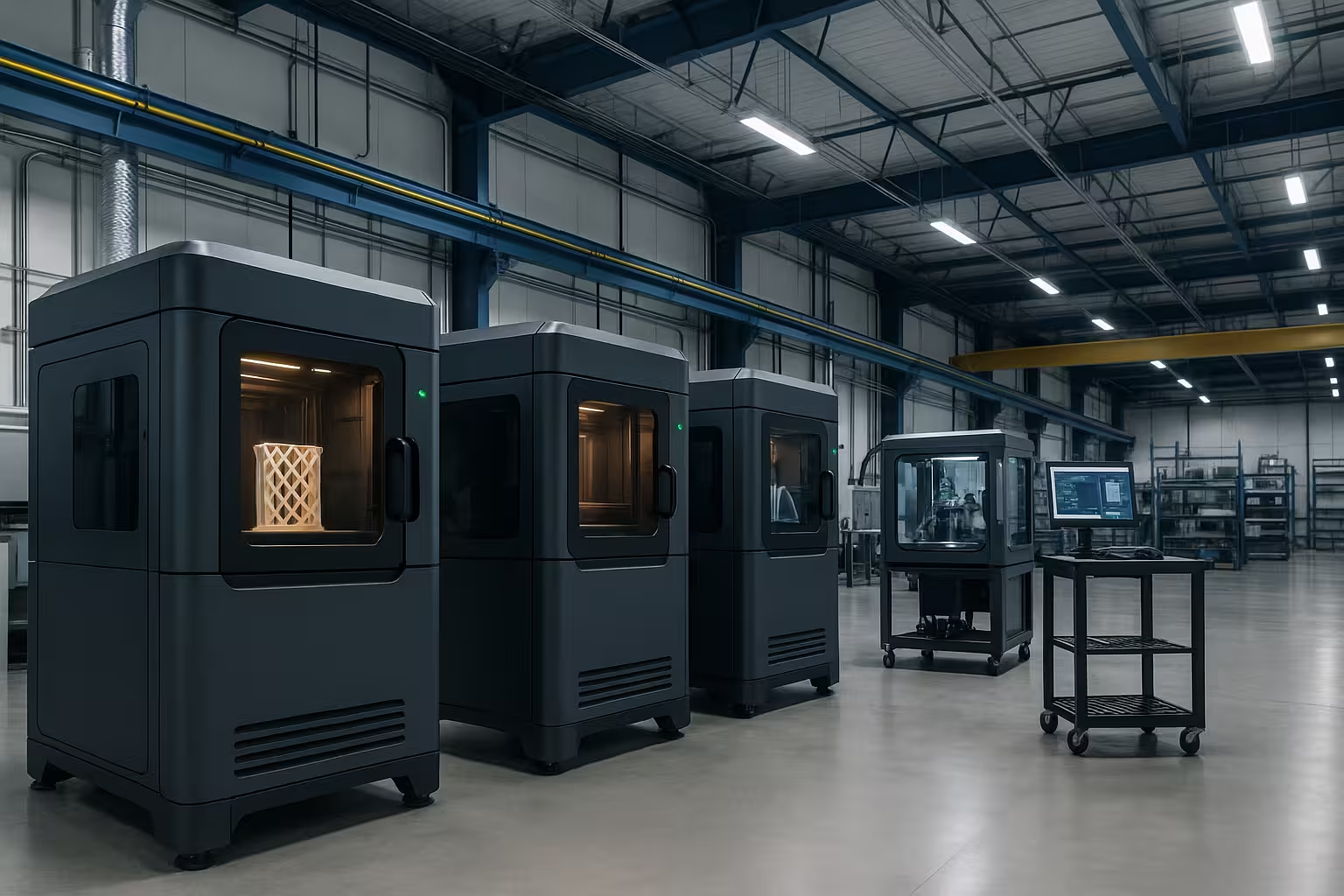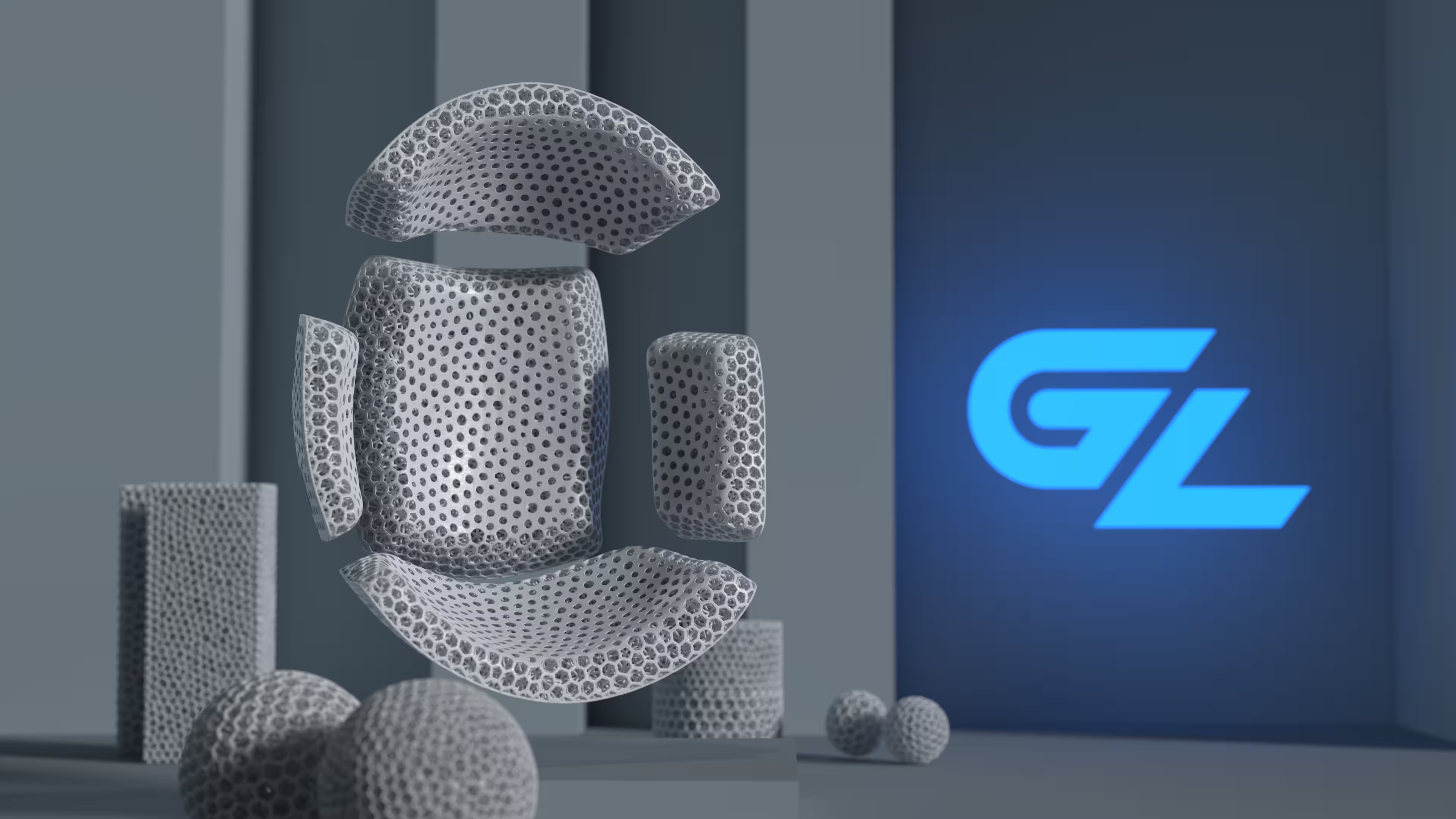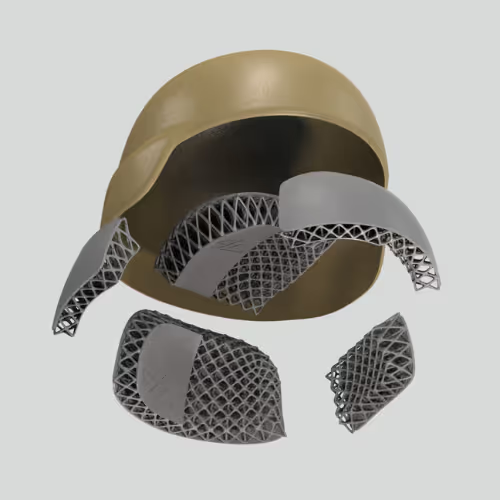Taking Shape: A conversation with Carol Kijac on the impact of additive manufacturing in supply chain and logistics

Introduction
The current global economic landscape is rapidly changing, and digital technologies are playing a critical role in transforming supply chains into more resilient, efficient, and responsive systems. Innovations such as real-time data analytics, automation, and intelligent forecasting are enabling organizations to navigate disruptions and meet shifting market demands with greater agility. Among these advancements, Additive Manufacturing is emerging as a technology with the potential to reshape traditional supply chain models, especially in how products are designed, produced, and delivered. As companies evaluate reshoring manufacturing operations, there are both promising opportunities and significant complexities. This conversation explores the impact of digital technologies on supply chain performance, the innovative uses of Additive Manufacturing across industries, and the strategic implications of reshoring in today’s manufacturing landscape.
Topic 1 | The role of Industry 4.0 in Supply Chains
Overview
Industry 4.0 (4IR) technologies are enabling predictive, agile, and customer-centric supply chains by replacing discrete, siloed operations with fully integrated digital ecosystems. As a result, supply chains are evolving from back-end functions into strategic engines that power growth, innovation, market responsiveness.
How does Industry 4.0 strengthen supply chains?
Carol: In logistics and supply chain, AI is one of the 4IR technologies that is fundamentally reshaping the way we forecast demand, manage inventory, and navigate the complexities of shipping and delivery through smarter routing and rating systems. These gains have led to significant operational improvements but represent only a fraction of what’s possible. When integrated with other 4IR technologies like Digital Twins, AI has even more advanced capabilities, from real-time scenario modeling to predictive risk mitigation. It’s hard not to think about how game-changing this would have been during the pandemic. The ability to simulate disruptions, proactively reroute freight, and respond to volatile demand with much more accuracy and speed could have drastically reduced bottlenecks and helped stabilize global supply flows.
Today, we have other factors impacting global supply chains. Reshoring initiatives and increased tariffs aimed at bringing manufacturing back to the US, are creating uncertainties and disruptions. Efforts to diversify supply chains can create significant operational risks and exposure, particularly when trying to quickly replace established suppliers with new sources. This is where a technology like Additive Manufacturing (AM) could serve as a strategic asset. While traditional manufacturing is often dependent on extended global supply chains and high-volume production runs, AM enables localized, on-demand production with minimal setup time. In the current environment of geopolitical tensions and increasing protectionist policies, the ability to manufacture critical components closer to the point of need, without the delays or dependencies of complex global sourcing, is a huge advantage. It can support reshoring efforts by filling capability gaps where domestic suppliers are limited or nonexistent, reducing lead times and minimizing exposure to tariffs. And, as we experienced with COVID, when access to vital components becomes severely constrained, the ability to pivot quickly with local, flexible production capacity could be the difference between supply chain disruptions or resiliency.
General Lattice: Additive Manufacturing (3D printing) is a very exciting 4IR technology that offers elevated levels of performance and innovation. One of the greatest strengths is its flexibility. Unlike traditional manufacturing, it doesn’t depend on tooling or molds, which allows for very fast design changes and an exceptional level of product customization. Manufacturing capacity and locations can quickly adapt to changing customer needs and this responsiveness illustrates the real value it brings, not just in manufacturing, but in revolutionizing the way supply chains operate and how customers are served. Parts can be stored digitally, eliminating the need for costly physical inventory while reducing the risk of shortages, stock-outs, and obsolescence. We’re seeing firsthand how tariff pressures are prompting companies to hold excess inventory in anticipation of rising costs, so the predictability it brings during shifting market conditions is transformational.
In addition to offering greater flexibility, 3D printing also streamlines processes and reduces waste. The ability to integrate multiple parts into a single part simplifies the assembly process. There is much less material waste than traditional manufacturing making it a more sustainable process. By facilitating rapid prototyping, it allows manufacturers to move from concept to production more quickly and efficiently. Costs and lead times are reduced, particularly for low-volume or specialized parts more difficult to produce with traditional manufacturing. This, along with its diverse applications, speaks to its continued expansion across industries and its role as a key enabler of innovation.
Topic 2 | Digital Transformation in Supply Chains: Strategic Considerations
Overview
Digitalization has become a strategic imperative across businesses globally, with over 70% of executives identifying it as a top priority. However, the failure rate of digital initiatives, often cited as exceeding 60%, reveals a persistent disconnect between vision and operational execution.
What are the key enablers for successful adoption of Digital Technologies?
Carol: I think some of the most significant barriers to adopting digital technologies have little to do with the technology itself. A lack of clear goals, fear of change, and trying to implement new tools on top of legacy processes can derail an implementation, so creating a well-defined strategy that aligns people and processes from the outset is critical. Equally important is how effectively the pending change is communicated. Employees need to understand not only what’s changing and why it matters to the organization, but how it benefits them personally. Messaging that focuses solely on productivity can create anxiety around workload or job security. Instead, framing technology as a means to eliminate repetitive tasks and focus on more strategic, skill-building work that will lead to growth opportunities, fosters stronger engagement. Facilitating this requires a broader strategy that’s supported by collaboration between departmental leaders and day-to-day users of the technology, ideally through a cross-functional committee that defines the vision, sets clear goals, and champions the effort across all areas of the business. Committee participants help drive adoption when they clearly communicate progress and reinforce the ways the transformation is meaningfully reshaping day-to-day work.
Understanding current processes is also essential before implementing any solution. With additive manufacturing specifically, my experience is limited as an external consultant, but I’ve found that both AM and logistics face a common challenge: success depends on the ability to coordinate a complex network of discrete workflows, systems, and partners. From design to production in AM, or from sourcing to delivery in logistics, each step often involves specialized teams, third-party providers, and disjointed technologies and data. This fragmentation can lead to inefficiencies, delays, and poor visibility across the value chain. In both industries, digital solutions that consolidate workflows and data, streamline collaboration, and create end-to-end transparency will serve as powerful enablers. By bridging these operational gaps, organizations would be able to shift their focus from managing complexity to creating more strategic value for their customers through faster, decentralized production with more agile, resilient supply chains.
General Lattice: The adoption of Additive Manufacturing (AM) into supply chain strategies introduces numerous transformative advantages, but only when paired with the right digital infrastructure. While traditional manufacturing leans heavily on physical tooling to enforce static design elements, AM removes those dependencies, enabling rapid iterations, in-line design changes and product customization. However, without the rigidity of physical molds, AM demands a new form of “digital tooling” to ensure consistency. This makes the implementation of a digital thread (a unified, traceable data stream from design to delivery) critical to ensuring quality and repeatability at scale.
To further support this, companies must prioritize the development of validated standard operating procedures (SOPs) that are directly tied to each step of the additive manufacturing process. These SOPs serve as critical blueprints for quality assurance, ensuring that once a process is proven, it can be executed consistently, regardless of where the part is produced. With clearly defined, rigorously validated procedures, part variability is minimized, enabling manufacturers to confidently replicate production across sites while reducing manufacturing and logistics lead times. Digital twins can enhance simulation and validation efforts, but it’s the SOP that operationalizes repeatability and enables distributed manufacturing to scale with reliability and precision.
The success of digital manufacturing doesn’t solely rely on new technologies; it also hinges on how well those technologies are implemented across people and processes. As an example, logistics functions will need to be integrated more closely with manufacturing, IT, and quality assurance to ensure synchronized execution, particularly when parts are produced simultaneously across geographies. This means that for AM to reach its full potential, it must be embedded into organizational processes that support cross-functional collaboration and technical upskilling. It’s a shift in operational mindset and as more companies explore distributed production and localized supply chains, the competitive advantage will go to those who can blend digital infrastructure with agile logistics networks, enabling faster response times, improved resilience, and mass customization at scale. However, this transition raises a broader question as to whether our current workforce, and the infrastructure surrounding it, is prepared to support the scale and speed of next-gen manufacturing.
Topic 3 | Reshoring and the Manufacturing Skills Gap
Overview
Years of reliance on foreign sourcing have contributed to a steady decline of domestic manufacturing capabilities. These technologies require new skill sets and significant time for adoption, intensifying the gap between policy ambition and operational readiness.
What are some of the opportunities and challenges reshoring presents for supply chains?
Carol: Without a strong domestic manufacturing base that includes a skilled workforce and advanced digital capabilities we risk falling behind in global competitiveness and technological leadership at a time when innovation is moving faster than ever. The semiconductor industry highlights this vulnerability: 90% of the world’s most advanced chips are manufactured by one company, Taiwan Semiconductor Manufacturing Company (TSMC), and 100% of the extreme ultraviolet lithography machines that produce those chips are manufactured by one company in the Netherlands. With the looming tariff increase on chips, these dependencies pose strategic and economic risks, especially as AI accelerates across critical sectors such as defense, healthcare, and many others. Disruptions in any of these supply chains can have significant operational and financial impact, as well as broader consequences that extend to public safety and national security.
While reshoring initiatives can reduce global dependencies and strengthen supply chain resilience, they also introduce a new set of challenges. Reconfiguring logistics and supply chain networks to support reshoring is a complex process and even when successful, is not insulated from domestic market disruptions. The American Trucking Association (ATA) projects a potential shortfall of 80,000 to 160,000 drivers by 2030, a gap that could significantly impact domestic transportation capacity. At the same time, most global companies are unlikely to fully abandon international operations as they continue to rely on foreign markets for access to raw materials, proximity to customers, and regulatory or economic advantages. For example, an industrial chiller manufactured in the US might be made up of parts from various countries: wire from China, steel from Canada, pipes from India, harnesses and fan coils from Mexico, motors from Germany, copper from Peru, and electronics from Korea, all of which could be subject to tariffs¹. Collectively, these factors create a need for more flexible, regionally distributed production models that can support both reshoring efforts and global operations.
An area I’ve found particularly interesting is the growing adoption of microfactories as a strategy for more localized production. These small, highly automated facilities are integrated with digital technologies like Robotics, IoT, AI, and Additive, all hallmarks of 4IR that enable more adaptive decision-making across supply chain operations. The ability to deliver products more quickly and responsively to customers is a huge advantage. And while they have the potential to support reshoring and build supply chain resilience, their success depends on how well they are embedded into broader logistics strategies and workforce development initiatives.
General Lattice: The collapse of semiconductor, automotive, and other supply chains during the pandemic was one of many driving factors that led to governments around the world to start providing incentives for reshoring. Whether operations are based onshore or offshore, traditional manufacturing relies heavily on complex production planning to coordinate inventory, suppliers, and lead times. This process is not only labor-intensive, but also highly vulnerable to demand volatility and unexpected disruptions. In response, Additive Manufacturing (AM) has emerged as a pivotal technology that addresses these challenges, facilitating a smoother transition to reshored manufacturing operations.
One of the most compelling opportunities offered by AM is the deployment of additive manufacturing microfactories. These compact, highly automated facilities can be deployed globally in a fraction of the time compared to traditional manufacturing operations, allowing manufacturers to quickly produce a variety of parts on-demand via digital inventories.
Additionally, in today's economic climate, characterized by increased tariffs and geopolitical uncertainties, reshoring through AM can become especially advantageous. By producing components closer to their final points of consumption, businesses can effectively mitigate tariff-induced costs and lower the risk of international logistics disruptions. Additionally, the agility of digital inventories enables a swift response to market fluctuations, enhancing supply chain reliability. Manufacturers who successfully integrate AM by overcoming workforce and skill challenges will position themselves strategically for sustained competitiveness in the dynamic global economy.
However, to fully leverage AM’s potential, manufacturers must be willing to not only develop skilled workforces proficient at working with digital manufacturing technologies but adopt infrastructure critical to enforcing and maintaining a robust digital thread required to ensure part transparency and quality control.
Final Thoughts
While there is not a one-size-fits-all solution to these challenges, Additive Manufacturing does provide several advantages across supply chains:
Resilience: Additive manufacturing eliminates physical tooling dependencies and enables digital inventories, helping organizations rapidly adapt to disruptions and reduce global supply chain vulnerabilities.
Reduced Exposure: Microfactories that are integrated with 4IR technologies advance reshoring efforts and minimize tariff-related risks by enabling agile, localized production.
Increased Quality | Consistency: Robust "digital tooling" through standardized procedures and digital thread implementations ensures manufacturing consistency and quality across distributed production sites.
Improved Workforce Development and Collaboration: Additive manufacturing depends on cross-functional alignment to foster collaboration between logistics, IT, manufacturing, and quality teams while advancing workforce skills to continuously innovate.
Audience Questions
While the speed and scale at which 3D printing will be mainstreamed is ambiguous, Industry 4.0and reshoring initiatives serve as significant catalysts to its adoption. As new AM technologies are being developed, we’re left with some questions to consider:
- What parts of AM need to be simplified in order for more widespread adoption to occur?
- Where in your industry would you like to see AM play a more significant role? What’s driving this?
- As the adoption of AM continues to grow, how will this change logistics and supply chain networks? What planning needs to be done? Who should be involved?
About General Lattice
As a leader in computational design and digital manufacturing, General Lattice designs and develops High-Performance Lattice Material (HPLM) solutions on a service and software basis. The company is headquartered in Chicago, IL. To learn more about General Lattice, visit www.generallattice.com or contact info@generallattice.com. Follow the company on Instagram @generallattice.
Works Cited
¹ Long, Mark. (3April 2025). Wall Street Journal Logistics Report. https://logistics.cmail19.com/t/d-e-sdrbjy-diclddydd-r/
² Goel, V. (2017,December 6). Why Apple Is Going All in on China. The New York Times.https://www.nytimes.com/2017/12/06/technology/apple-china.html



.avif)

.avif)